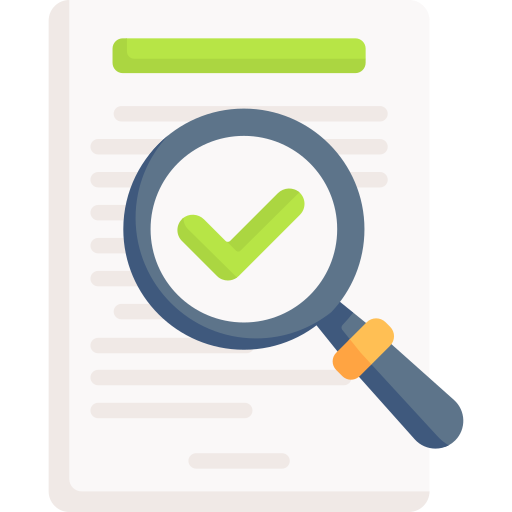We mentioned hyphens in our last article, but they are so often used (and misused) that they deserve an article of their own.
What exactly is a hyphen? It is a short, horizontal punctuation mark like the one between these parentheses ( – ). A hyphen has multiple uses in English writing. Let’s take a look at some of them.
Need Editing and
Proofreading Services?

Compound numbers
One way hyphens are used is to connect compound numbers between twenty-one and ninety-nine. You also include a hyphen if you are writing a larger number that has a compound number within it, such as “six hundred and fifty-two” or “ninety-five million”.
Line Breaks
In the era when people used typewriters instead of word processors, hyphens were used at the end of a line when there wasn’t enough space for a whole word. You would type the first syllable, followed by a hyphen, and then finish the rest of the word on the next line. This practice has nearly become obsolete, but you may see older texts with these kinds of line breaks.
Prefixes
A prefix is a syllable that you can add to the beginning of a word to modify its meaning. Here are some prefixes that you will probably recognize:
| pre- | post- | anti- | un- |
| semi- | ex- | co- | re- |
| micro- | macro- | non- | multi- |
| bi- | tri- | trans- | sub- |
| de- | dis- | mid- | mis- |
Most commonly used words do not include a hyphen after a prefix. Note that the word “prefix” itself falls this camp, as do “unhappy”, “submarine”, “recycle”, “disagree”, and “triangle”.
However, hyphens are occasionally used between a prefix and the word it modifies. Some examples include “ex-husband”, “co-opt”, “mid-century”, and “non-dairy”.
How can you tell when to include a hyphen after a prefix? The grammatical rules are fuzzy, but if putting the prefix and the root word together results in a double vowel (ee, ii, uu, oo), then you should include a hyphen. For example, “de-escalate” and “anti-intellectual” are much easier to read than “deescalate” and “antiintellectual.”
You should also include a hyphen if the root word starts with a capital letter, as is the case with “anti-American” and “pro-European”.
Some words might confuse your reader or cause a misunderstanding if they are not hyphenated. Consider the following sentences:
I resent the email. (Is this person angry about something that was in the email, or did he/she simply send it again?)
I re-sent the email. (This is much easier to understand!)
Compound words
When two words are joined together to form a new word, this is called a compound word. Some common compound words include “snowman”, “somebody”, “playground”, “football”, “notebook”, “airport”, and “bedroom”.
The vast majority of compound words are not hyphenated. Here are some exceptions:
| part-time | hands-on |
| in-depth | self-esteem |
| well-being | first-class |
| old-fashioned | vice-president |
| fine-tuned | well-behaved |
| on-site | left-handed |
| close-up | long-term |
Hyphens are also used when a compound word is made up of more than two words: “merry-go-round”, “around-the-clock”, “brother-in-law”, “six-year-old”, “face-to-face”, “one-on-one”, “up-to-date”.
Compound adjectives
Ordinarily, a one-word adjective is used to describe a noun. Some examples are “a pretty baby”, “a busy office”, and “some hot water”. However, sometimes two or more words are joined together with a hyphen to create a compound adjective.
In each of the following sentences, the noun is written in boldface. The hyphenated word that comes before it is the compound adjective. Although a compound adjective can have many parts, it is considered to be one word.
The quick-thinking paramedic saved Grandpa’s life.
Robert’s tight-fitting jeans made him look ridiculous.
This is a working-class neighborhood.
I will provide a twice-weekly update on the sales figures.
That bar is at the top of my never-ever-go-there list.
As you can see from that last sentence, you can get really creative with compound adjectives! You may have noticed that the title of this article also includes a compound adjective.
Need Editing and
Proofreading Services?

A brief history lesson
Did you know that “teenager” used to be written as “teen-ager” and “baseball” was once “base-ball”? As these words became more familiar, they gradually lost their hyphens. We are seeing this now with certain words related to technology and computers. Some people still use “e-mail” and “anti-virus”, but more often these words are written as “email” and “antivirus”, without a hyphen.
Are you still unsure if you are using hyphens correctly? Click the blue box below (or click here if you are working on a longer document) and one of our TextRanch editors will check your writing.









4 Replies to The Ever-So-Helpful Hyphen
I found the material on the dash very enlightening. The only reason I didn’t give it 5 stars is that I think you should lead into a sequel with something like “Please see our article on how to distinguish between a hyphen and a dash.”
You can find more information about hyphens and dashes in one of our previous articles: https://blog.textranch.com/when-symbols-replace-words-part-two/
I was taught that the words ending “ly” (slightly) aren’t hyphenated
Usually it isn’t necessary to use a hyphen after an -ly adverb. However, in some instances (such as the example in this article with “twice-weekly”) we do use a hyphen.
Ask an Editor: A New TextRanch Feature!
Proofreading vs. Editing: What’s the Difference?
Human Editors: Why Do You Need One?
How can I improve my understanding of native-English speakers? Part 1